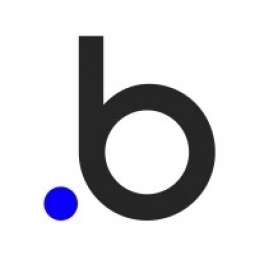Technology Category
- Platform as a Service (PaaS) - Application Development Platforms
Applicable Industries
- Cement
- Retail
Applicable Functions
- Product Research & Development
Use Cases
- Building Automation & Control
- Time Sensitive Networking
About The Customer
MenuNV is designed for individuals and households who find meal planning a time-consuming task. These users are looking for a solution that not only provides them with a variety of recipes but also helps them plan their meals and generate shopping lists efficiently. The app is particularly beneficial for those who cook regularly and are looking for a way to streamline the process of deciding what to cook and determining what ingredients they need. The app also allows users to share their recipes, making it a community-driven platform.
The Challenge
MenuNV founder, Sandra Vallance, was faced with the challenge of finding a solution to the time-consuming task of meal planning. She identified that while there were numerous recipe-related apps available, none offered automated meal planning, a feature she believed could save users significant time. The challenge was to create an app that could generate a weekly menu plan and shopping list at the click of a button. However, as a senior executive and CEO, Sandra lacked the time to learn full-stack development to bring her idea to life. She needed a platform that could help her develop her app quickly, efficiently, and at a low cost.
The Solution
Sandra chose Bubble, a no-code platform, to develop her app. Bubble's powerful features, community support, and low cost enabled her to bring her app, MenuNV, to life. Once users sign up for MenuNV, they can create their household and set defaults for how they like to plan menus. They can then add their recipes into the app or use the menu planning feature, which allows them to create a plan using recipes that other households have made public. Once a menu plan has been created, a shopping list can be generated based on the ingredients in the plan's recipes. Sandra was able to go from zero to a minimum viable product (MVP) in about 12 weeks with the help of an experienced Bubble developer.
Operational Impact
Quantitative Benefit

Case Study missing?
Start adding your own!
Register with your work email and create a new case study profile for your business.
Related Case Studies.

Case Study
System 800xA at Indian Cement Plants
Chettinad Cement recognized that further efficiencies could be achieved in its cement manufacturing process. It looked to investing in comprehensive operational and control technologies to manage and derive productivity and energy efficiency gains from the assets on Line 2, their second plant in India.

Case Study
Improving Production Line Efficiency with Ethernet Micro RTU Controller
Moxa was asked to provide a connectivity solution for one of the world's leading cosmetics companies. This multinational corporation, with retail presence in 130 countries, 23 global braches, and over 66,000 employees, sought to improve the efficiency of their production process by migrating from manual monitoring to an automatic productivity monitoring system. The production line was being monitored by ABB Real-TPI, a factory information system that offers data collection and analysis to improve plant efficiency. Due to software limitations, the customer needed an OPC server and a corresponding I/O solution to collect data from additional sensor devices for the Real-TPI system. The goal is to enable the factory information system to more thoroughly collect data from every corner of the production line. This will improve its ability to measure Overall Equipment Effectiveness (OEE) and translate into increased production efficiencies. System Requirements • Instant status updates while still consuming minimal bandwidth to relieve strain on limited factory networks • Interoperable with ABB Real-TPI • Small form factor appropriate for deployment where space is scarce • Remote software management and configuration to simplify operations

Case Study
How Sirqul’s IoT Platform is Crafting Carrefour’s New In-Store Experiences
Carrefour Taiwan’s goal is to be completely digital by end of 2018. Out-dated manual methods for analysis and assumptions limited Carrefour’s ability to change the customer experience and were void of real-time decision-making capabilities. Rather than relying solely on sales data, assumptions, and disparate systems, Carrefour Taiwan’s CEO led an initiative to find a connected IoT solution that could give the team the ability to make real-time changes and more informed decisions. Prior to implementing, Carrefour struggled to address their conversion rates and did not have the proper insights into the customer decision-making process nor how to make an immediate impact without losing customer confidence.

Case Study
Digital Retail Security Solutions
Sennco wanted to help its retail customers increase sales and profits by developing an innovative alarm system as opposed to conventional connected alarms that are permanently tethered to display products. These traditional security systems were cumbersome and intrusive to the customer shopping experience. Additionally, they provided no useful data or analytics.

Case Study
Ensures Cold Milk in Your Supermarket
As of 2014, AK-Centralen has over 1,500 Danish supermarkets equipped, and utilizes 16 operators, and is open 24 hours a day, 365 days a year. AK-Centralen needed the ability to monitor the cooling alarms from around the country, 24 hours a day, 365 days a year. Each and every time the door to a milk cooler or a freezer does not close properly, an alarm goes off on a computer screen in a control building in southwestern Odense. This type of alarm will go off approximately 140,000 times per year, equating to roughly 400 alarms in a 24-hour period. Should an alarm go off, then there is only a limited amount of time to act before dairy products or frozen pizza must be disposed of, and this type of waste can quickly start to cost a supermarket a great deal of money.




